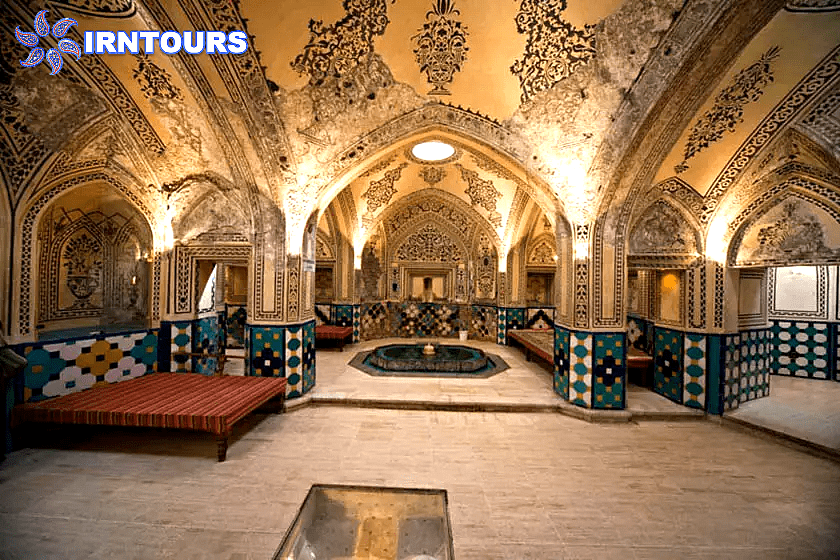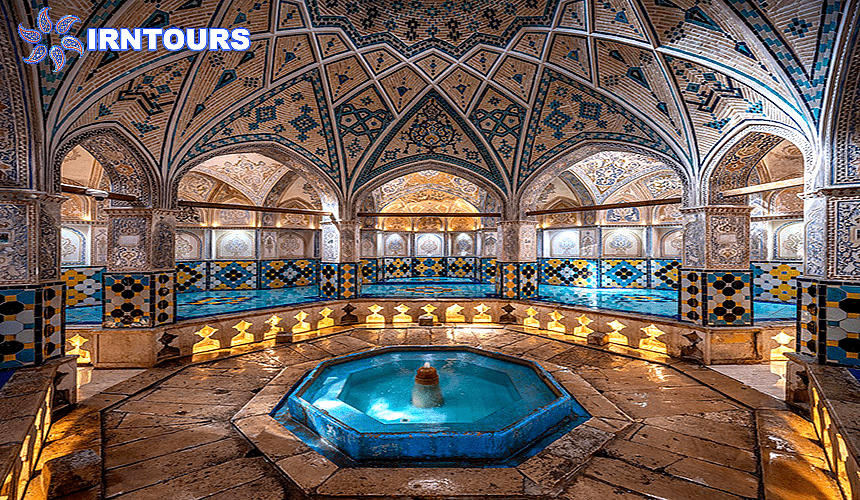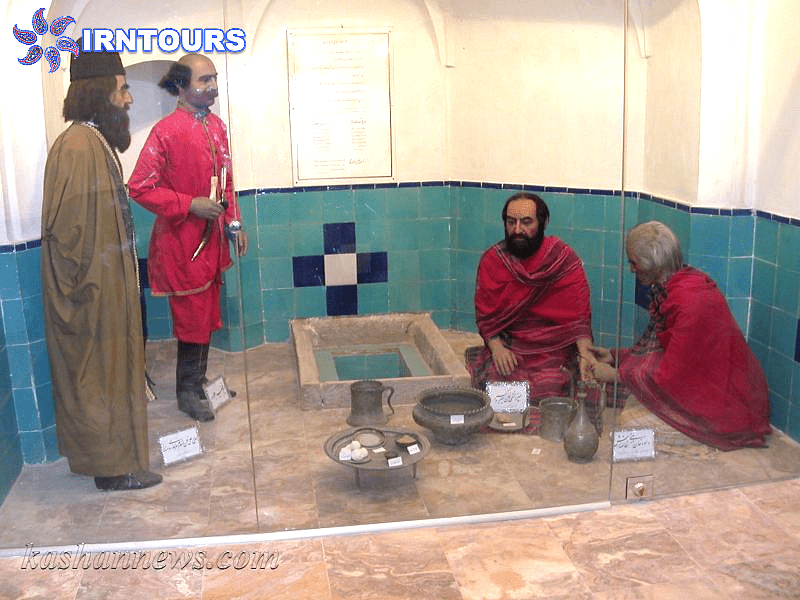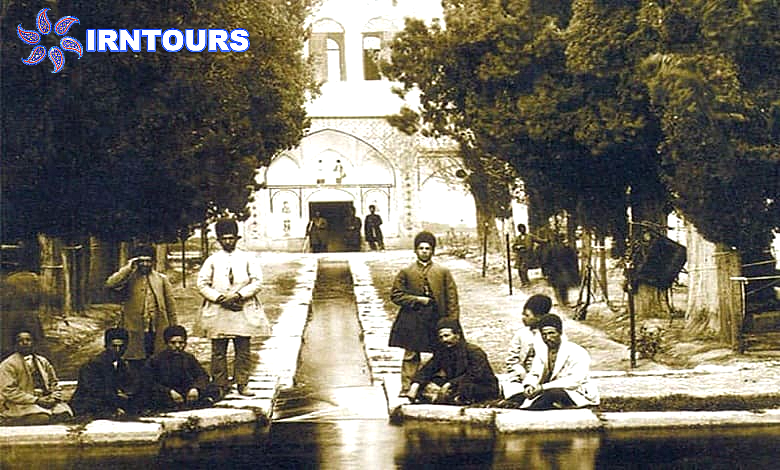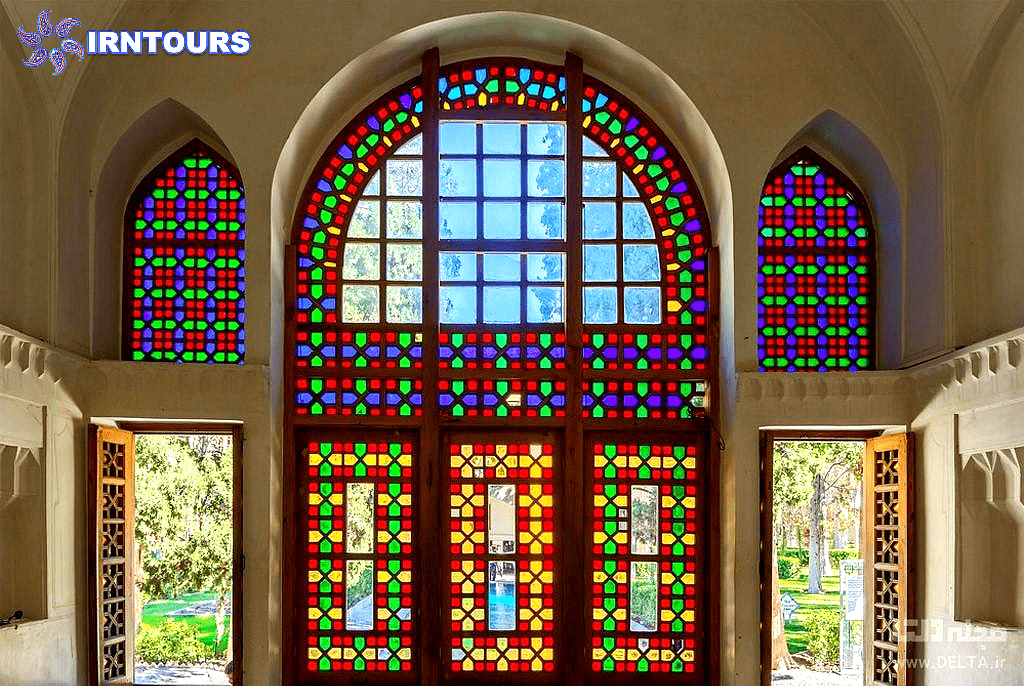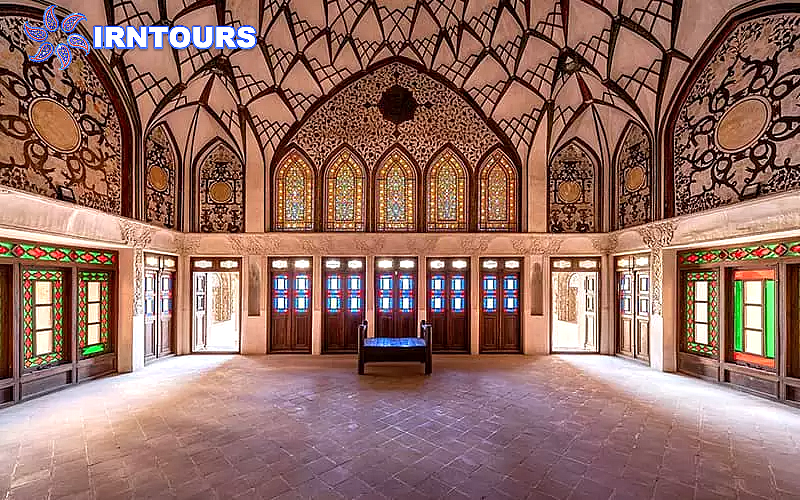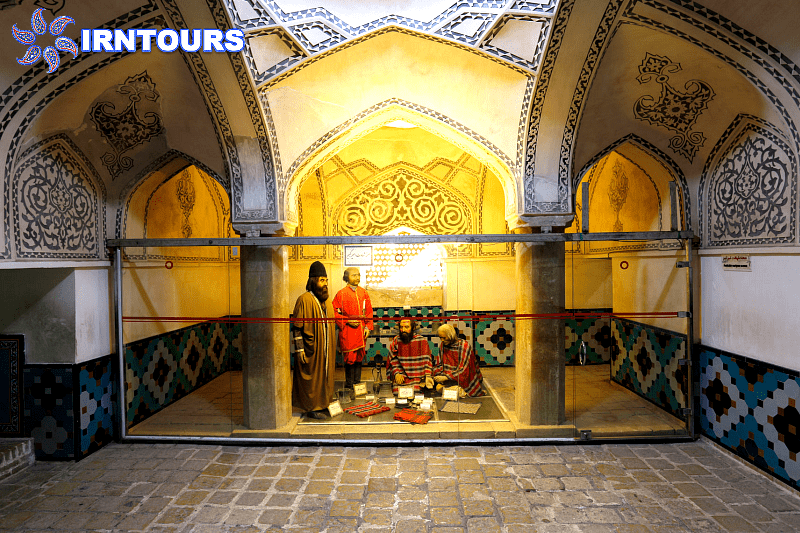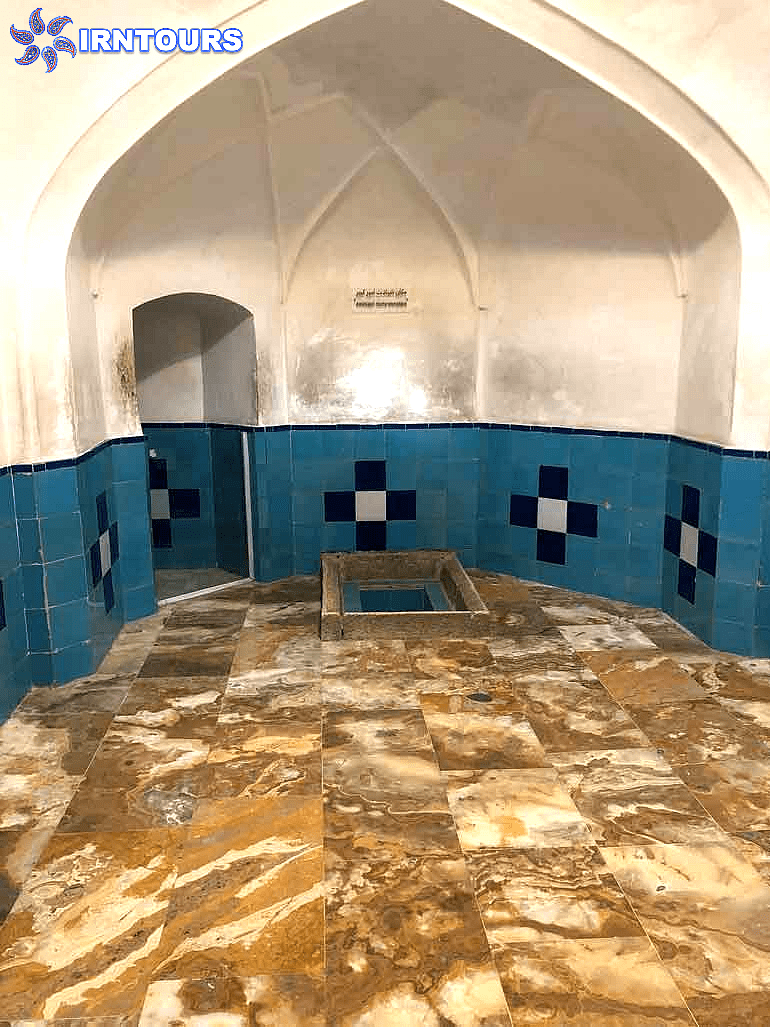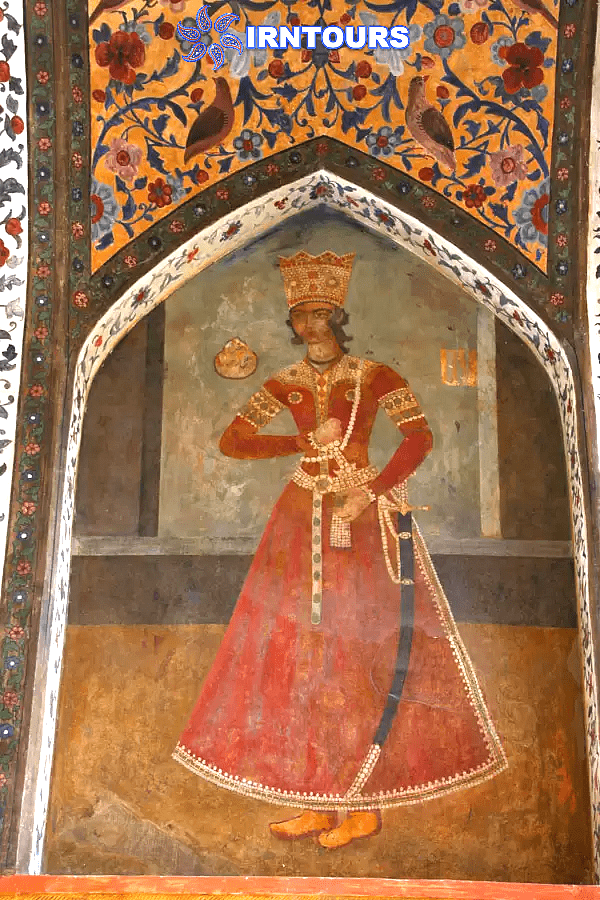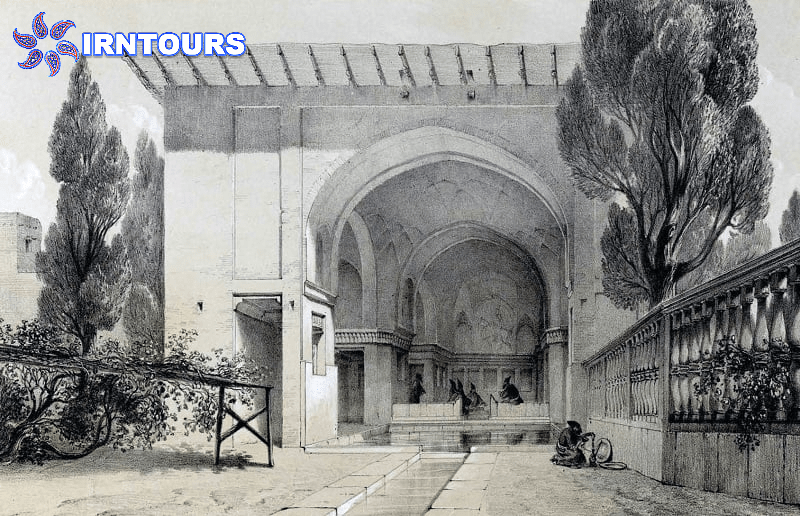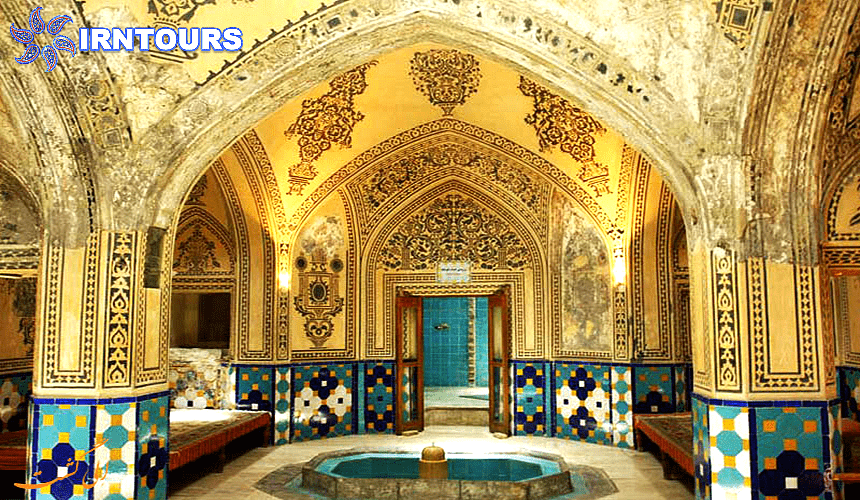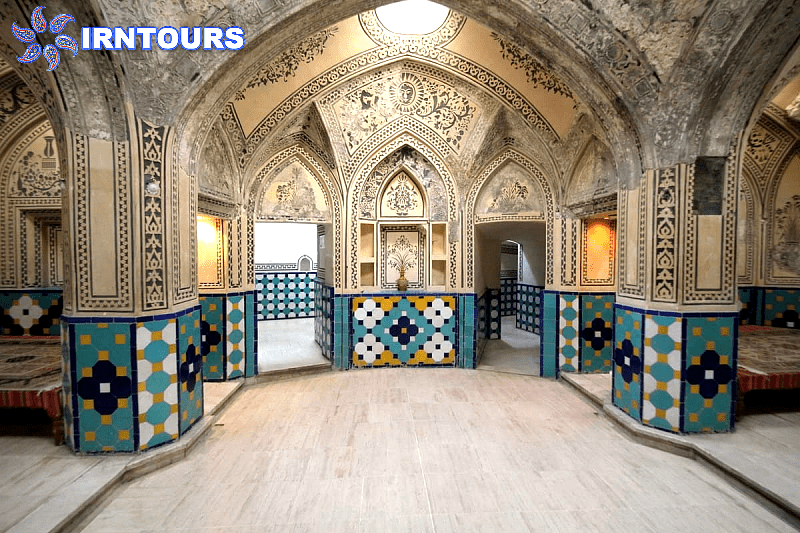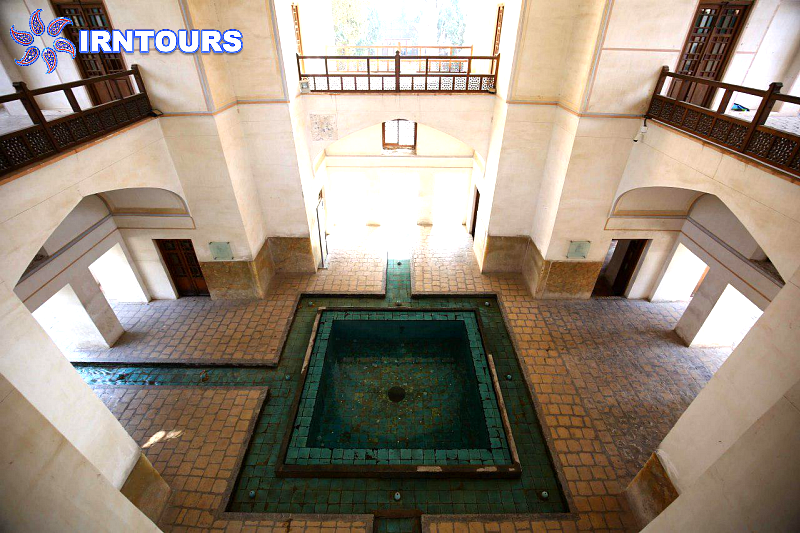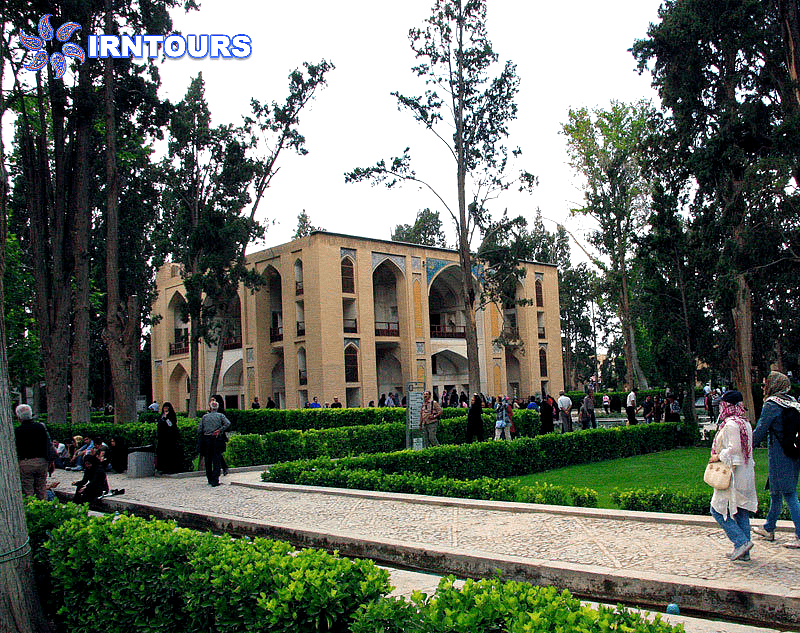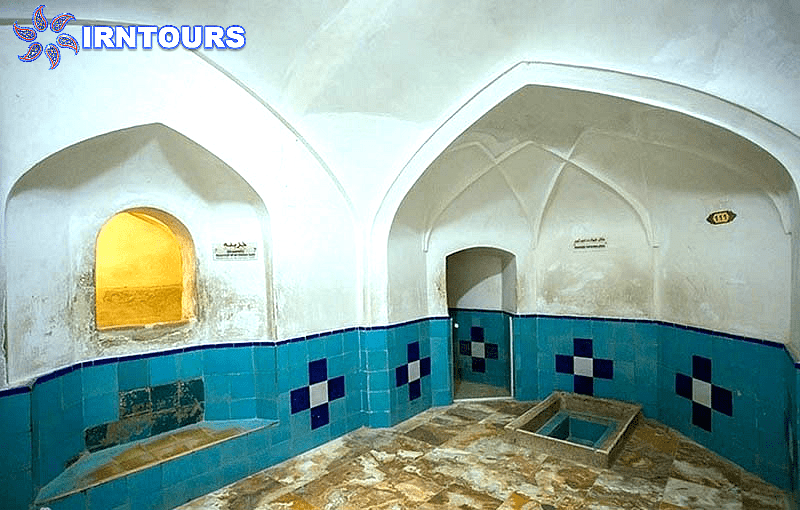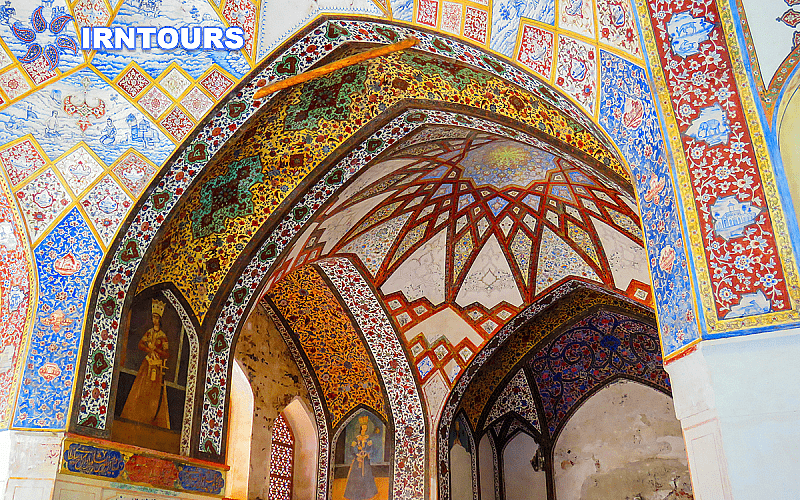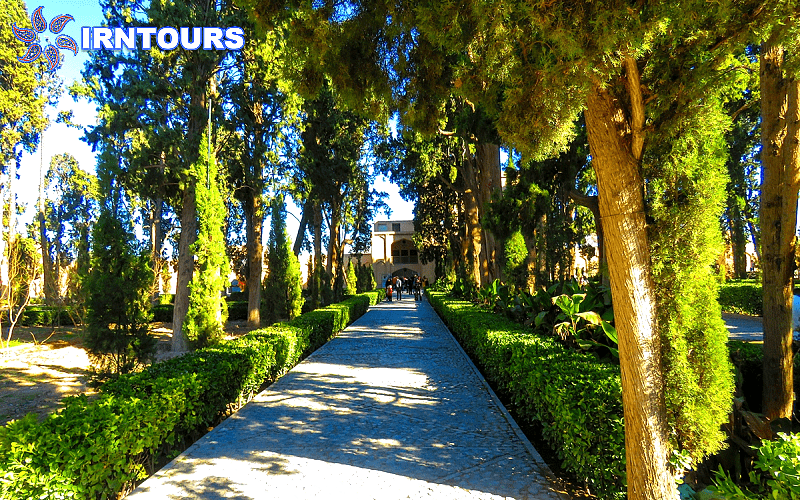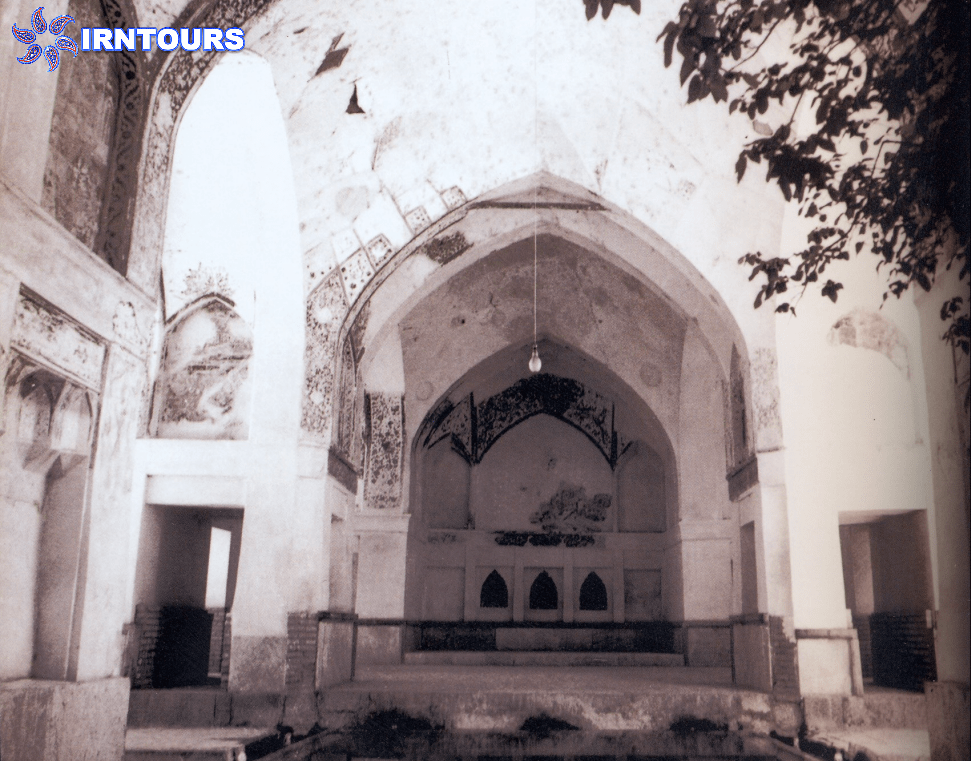
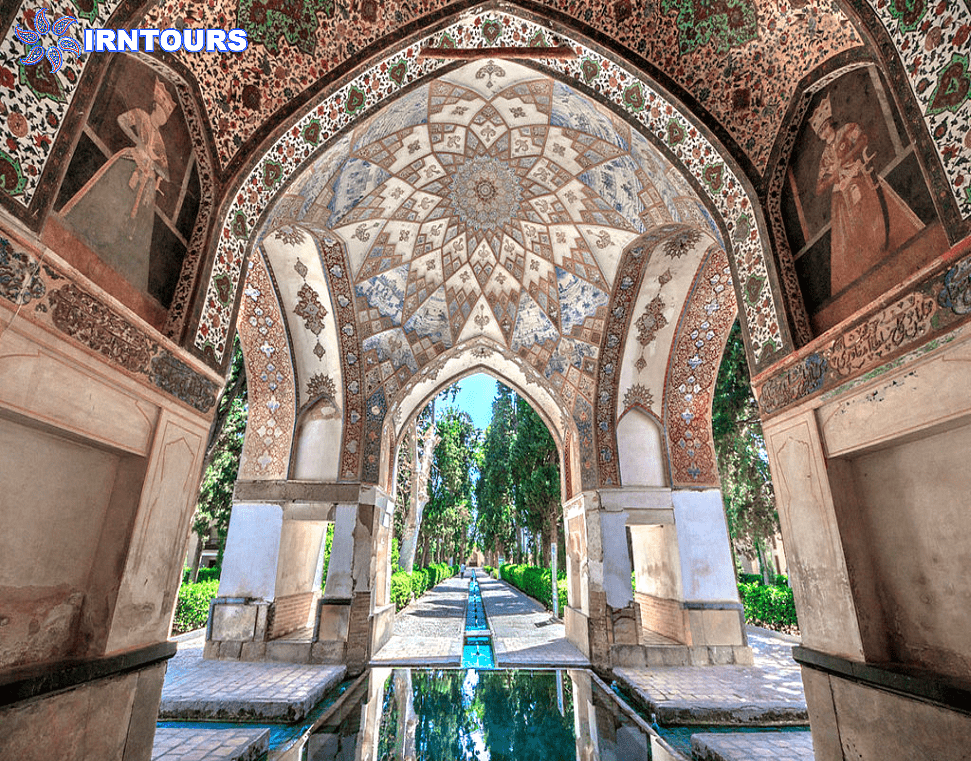
About Fin Kashan
Fin Garden is one of the most famous and important tourist attractions in Kashan, which is not only registered as a national monument; Rather, it is considered one of the 9 Iranian gardens in the world heritage list. This garden is so beautiful that it is mentioned as a perfect example of Iranian gardening. Thanks to the presence of numerous fountains, the pleasant sound of water, and tall trees, Fin Garden is a dream place for sightseeing. Especially since its teahouse also provides you with the opportunity to enjoy these pure moments to the fullest.
In addition, there are many historical monuments such as Khlot Karimkhani, Hoz Joshan, Qajar camel’s throat, water division and Kashan National Museum in this garden, which are worth visiting. However, perhaps one of the main reasons for the fame of Bagh Fin is the murder of Amir Kabir, the famous chancellor of Iran, which is one of the most important historical events in this garden. In the rest of this article, we will talk more about Fin Kashan Garden and its amazing engineering and interesting water supply system.
Introducing Fin Kashan Garden
When you step into this garden, in addition to being fascinated by its enchanting beauty, you will encounter several centuries of history; Finally, you can visit the garden tea house, which is located in a pleasant atmosphere and doubles the enjoyment of this environment for you.
One of the interesting things about this garden comes from the belief of some people who believe that by throwing a coin into the pond, their wish will be fulfilled. Although this is considered fun, the philosophy of throwing coins into water can be found in the Zoroastrian religion, where water is a symbol of purity, and its followers would give part of their wealth to the water goddess to bless their homes.
Where is Fin Kashan Garden ?
- Address : To visit Fin Garden, you should leave for the historical city of Kashan in Isfahan province and continue your route towards Amir Kabir Street to reach the lush and vast Fin Garden.
- Phone number of Fin Garden Kashan: 03155302070
History of Fin Kashan Garden
Due to the spring that flows in the Fin area, it has been the attention of kings and rulers since the distant past. The exact date of Garden Fin is not known, and therefore some people attribute its construction to the era of Ardeshir Babakan. But what is certain is that the first mention of Fin Garden in historical sources is related to the time of Yaqub Leith Safari, who spoke about the existence of a spring and a garden in the central deserts of Iran.
According to historical sources, some experts have considered the Al-Boyeh era as the time of the formation of Garden Fin, and some have attributed it to the Ilkhani era; Especially Yaqut Hamavi, one of the historians of the 7th century AH, said about the circulation of Kashan people in the gardens of Fin.
- Safavid dynasty : At the end of Shah Tahmasb’s reign in 1572, Garden Fin was severely damaged by a terrible earthquake, and what is known as Garden Khaneh today is actually the remains of the same earthquake, which can be seen a few hundred meters away from Garden Fin.
During the time of Shah Abbas I, measures were taken to improve Kashan, and in the same period, today’s Fin Garden, known as “Fin New Garden”, was built. For this new garden, they built high round towers and built a wide street and square between the old and new garden, which was used for polo and all kinds of competitions and games.
In order to prevent the risk of flooding, Shah Abbas also ordered the construction of a dam made of stone and rubble one kilometer south of the garden, which still exists. In addition, in the book of historical works of Kashan and Natanz cities by Hasan Naraghi, it is mentioned about the construction of palaces and high towers around Garden Fin.
The construction and development of New Garden continued after Shah Abbas and during the era of Shah Safi and Shah Abbas II. So, during the time of Shah Safi, the upper floor of the Safavid camel’s throat building was built with wood and iron so that he could watch the surrounding scenery from the highest point.
In addition to the entrance gate, buildings such as one of the garden baths and the Safavid hut were also built in this period. Safavid Shah Suleiman did not lag behind this caravan and ordered the construction of a fence around the Fin spring, which is perhaps the reason why it became known as “Sulaymaniyah spring”. The cobblestones of Garden Fin, which have a sun design, belong to the Safavid era. - Zand Dynasty : Fin Kashan Garden was far from its peak period from the end of the Safavid period to the Zandiyeh period; Until Karimkhan Zand ordered the governor of Kashan to revive and restore the garden and the buildings in it. Along with these renovations, a new building called “Kholot Karimkhani” was also added to the garden.
- Qajar Dynasty : Most of the modern buildings of the garden are the result of the era of Feth Ali Shah Qajar, who was very interested in the garden and Fin spring. According to his order, Hekran Kashan was obliged to give a royal look to Fin Garden by carrying out a series of renovations. Therefore, in addition to a small bath next to the Safavid bath, a camel mansion was built next to the Karimkhani desert. You can find the camel neck of Fath Ali Shahi on the southeast side of Garden Fin.Among the other changes of this period, we can mention the addition of paintings with images of hunting and the official court of Fath Ali Shah to the Safavid camel’s neck building, the construction of the royal bath and the solitude of Nizam al-Dawlah.Mohammad Shah ordered to restore the garden in 1256 AH. In addition, the Shahneshin mansion and the boiling pool were built during his reign.
The construction of the Badgir mansion (the current library), the restoration of the large and small bath of the garden and the addition of seven-color and turquoise tiles to it are considered to be other achievements of the Qajar era.
- Pahlavi Dynasty : During the Pahlavi period in 1935, Fin Garden was registered in the national register, and this matter caused more attention to this astonishing work. At the same time, the restoration of the garden’s central pool was on the agenda. In 1957, the foundation stone of the Kashan National Museum was laid on the ruins of Nizam al-Dawlah. In addition to the building that was built near the baths and the library, many parts of the Finn Garden, such as the pavilions, were restored in 1978.
- After the Islamic Revolution : After the Iranian Islamic Revolution, Bagh Fin was not paid much attention; However, in 2007, a series of actions were carried out such as organizing the garden floor and streams inside the garden and the water exiting the ponds, restoring the Sardar mansion, renovating the roof of the Safavid Kush and installing CCTV cameras.
After the global registration file of Fin Garden was filed in 2009, following UNESCO’s request, changes were made to the garden’s sidewalks and pavements.
Historical events of Garden Fin
Fin Kashan Garden has witnessed important events throughout history, some of which will be briefly discussed below.
The celebration of Shah Ismail Safavi : At the beginning of his rule, Shah Ismail Safavi goes to Kashan and organizes a celebration for the public in Garden Fin. People also decorate the city in honor of his presence. During his two visits to Garden Fin, Shah Ismail made the people happy by celebrating and stomping in this place.
The murder of Khazr Nahavandi, the ruler of Kashan : Khazr Nahavandi was the ruler of Kashan for many years and had a lot of power to the extent that this authority caused Shah Abbas to worry. Around 1607, he was attacked and killed by someone with a knife in Fin Garden. Later it was said that this incident was a political assassination that was carried out on the order of the king.
Death of Shah Safi : Shah Safi had been to Garden Fin in Kashan many times; However, on his last trip, when he was staying in the Dolatkhane mansion, according to a story, he died due to drinking too much alcohol. After this incident, his 10-year-old son was crowned in this same garden.
The murder of Amir Kabir : Mohammad Taqi Farahani, known as Amir Kabir, who was the chancellor of Naseruddin Shah, had a great impact on the development of Iran and did many services for this country with measures such as the establishment of Dar al-Funun, the organization of the army, the distribution of Karaj water, the determination of salaries for courtiers, etc. Although he was one of the favorite faces of the king; The presence of enemies such as the Shah’s mother and Haj Ali Khan Maraghei eventually caused Amir Kabir to be removed from the position of chancellor and exiled to Kashan. After 40 days of this incident, Naser al-Din Shah regrets and sends him a robe; However, Amir Kabir’s enemies, knowing this, took advantage of the Shah’s drunkenness and obtained a signature from the Shah to kill this famous chancellor.
The killers are on their way to Kashan and they reach Fin’s garden when Amir Kabir was taking a bath. They enter the bathroom through the alley and tell the king’s order to Amir, and he requests to see his wife and children for the last time, write a few lines of will and pray two rakats. Requests that are not accepted and only allow him to choose the method of his death, and he also asks Delak Hammam to stroke his arm.
The killers don’t wait for Amir’s death to speed up their work and strangle him with a cloth. This tragic event happened on 10th of January 1942, which led to seven days of public mourning in the city of Kashan. His body was buried in Imamzadeh Habib bin Musa Kashan and two years later the wife of the Amir moved it to Karbala to be buried in the shrine of Imam Hussain (AS).
Shelter Naib Hossein Kashi : Naib Hossein Kashi and his associates were among the rebels of Muhammad Ali Shah’s era who went to Fin Garden and were present in this place for about 14 years, which led to the destruction of parts of the garden. Finally, the central government arrested them and they were sentenced to death in 1920.
Builder of Fin Kashan Garden
It was during the time of Shah Abbas I that the development of the city of Kashan was put on the agenda and the foundation of today’s Garden Fin was laid. Cultural heritage mentions Ghiyasuddin Jamshid Kashani as the designer of Fin Garden. The famous Safavid era mathematician who discovered the law of surface difference 200 years before Pascal and made the most of the natural slope of the earth in Garden Fin. However, some experts consider Sheikh Bahai as the designer of the garden.
Fin Kashan garden architecture
In the architecture of Fin Kashan garden, in addition to the dynamic elements of water and trees, the fixed elements of architecture, that is, the buildings, can be seen, which together have created a dreamy atmosphere. Although maintaining symmetry was particularly important in the initial design of the garden, over time this issue has been sidelined, which is evident in the axis of the garden and additional structures after the Safavid period.
- Water is one of the main elements in Finn’s garden, which has been used in different ways
Water : Water is one of the main elements in Fin garden, which has been used in different ways; In other words, from the stagnant water that can be seen in the pool in front of the pavilion, to the flowing waters of the rivers, the boiling water can be seen in the boiling water and the camel’s neck of Fath Ali Shah and the Safavi reservoir, as well as its gushing type in Garden Fin.
This large amount of water next to the towering trees, in this desert and scarce water area, fascinates every viewer; Especially the turquoise color that contrasts with the earthy color of the deserts around the garden.
First, you pour this water into a pool at the back of the garden, which, due to the height difference with the water level and the natural slope of the land, is thrown up in the form of a fountain. Clay pipes (tanbosheh) are installed around the ponds and under the streams at a depth of one meter of the ground, where the water enters and since the end of the pipe is closed, the water comes out from the fountains. According to the slope of the land, the diameter of the pipes is considered different; In such a way that the beginning of the pipe has a larger diameter than the end, and as a result, due to the distribution of pressure, the water that comes out of the fountains is the same size.
After circulating in the garden, the water goes out of this complex and along its path, it circulates a famous millstone, and then it merges with the water of the male spring and flows towards other gardens.
Passages of the garden: the longitudinal axis of the garden is right in the middle of the garden and in the northeast-southwest direction; Where it leads to the main entrance of the garden on the north side. The east-west passage is one of the main passages of the garden, on both sides of which are the Kashan National Museum and the Amir Kabir Library; The north-south passage also starts from Sardar mansion.
The sub-passage of the garden is also stretched from south to north, starting from the Shotor galou mansion on the south side and ending at one of the sub-entrances of the garden on the north side.
Tree: Trees are also one of the main elements of Fin garden, which have doubled its beauty. In addition to 579 cedar trees, 11 sycamore trees stand out in the garden, which are several centuries old. The oldest trees in the garden, known as Lily and Majnoon cypress trees, are located next to the Qajar hut with a life of about 500 years. This issue shows that the evergreen cypress tree played an important role in the design of the garden. Undoubtedly, planting some plantain trees next to the cypress trees was to increase the visual beauty of the garden. Other trees such as mulberry, fig, etc. are also visible in this garden.
Despite the importance of these trees, in the past years, several factors such as non-professional intervention, crossing of electric wires and cables, irregular irrigation, piping of facilities, severe frost, management problems, etc., have caused the trees to become dry and diseased.
Fin garden bubbling pond
The bubbling pond is one of the amazing parts of Bagh Fin, which attracts every tourist. The floor of this pond is completely tiled and has patterns similar to Kashan carpets. These tiles were taken to a private garden by looters led by Naib Hossein Kashi in the early period of Reza Shah. However, due to the lack of skill in installing the complex system of tiles, they were of no use and apart from a few that were lost, some of these tiles were sold to the Louvre Museum in Paris.
The boiling pool has 160 holes, each of which was a symbol of carpet flowers. The interesting function of these holes is that when the water comes out of the first hole as a fountain, the second hole acts as a water suction. As a result, half of the holes were for the fountain and the other half for water suction, and since the entry and exit of water were done the same, water did not overflow from the pond. These features have turned it into a masterpiece of water supply art, and it looks like it was designed by Ghiyasuddin Jamshid Kashani, and its dimensions follow the golden ratio.
twelve fountain pond
Twelve fountains pond was built during the time of Mohammad Shah Qajar and it is a pond like a water stream full of fountains, which is one of the wonders of Bagh Fin. This section is located after the boiling pool, which when the water sinks into the pool, it flows into the twelve fountains pool through clay tubs, and the fountains of this pool are used in the same way. It may be interesting to know that the philosophy of using ponds and fountains in Iranian gardens is to create a sense of relaxation by seeing water and hearing its sound, as well as cooling the ambient air.
The reason for the naming of Fin Garden
The Fin Garden is called this because it is located in the Fin region; But what does Fin mean? Some have said that the word “fin” means “end” in ancient Persian, which can be correct; Because this area was considered the end of the city. Furthermore, fin is said to be derived from the word fine; Because the people of this area used to wear a hat called Fineh..
About the buildings in Fin Garden
Safavid Kushk : The Safavid Kushk (Abbasi sofa) was built in two floors during the time of Shah Abbas I to be a place for celebrations and public events as well as entertainment. Kaleh Ferangi mansion was added to it during Shah Safi’s period, but no trace of it remains. Koushk is actually a small palace that was built at the intersection of the main axes of the garden and in the center of the Iranian garden.
The Safavid Kushk is quadrangular in shape, with a very beautiful pond in its center. Pale paintings by Reza Mosur Kashi can be seen at the entrance of the mansion, which is attractive to every viewer. These paintings were damaged by the attack of Afghans and the earthquake, and they were plastered over during the Qajar era. However, at present, some of them have been taken out from under the plaster.
Another feature of this building can be considered the flow of water on both sides of the building, the main part of which includes a large pool downstream of the Koshk and a pool of twelve fountains upstream of it.
When you visit this kiosk, you will come across the coin pond, which is also known as “Shotor Galou”. In fact, there is a hole in the middle of the pond, which has a clay pipe similar to a camel’s neck or the English “S” in the depth of two meters of the ground; The same position of the pipe causes the water to come out from the opening in the middle of the pond, and the visitors imagine that there is a spring in the middle of the pond. Tourists throw coins into the pond and believe that if the coin falls into the hole, their wish will come true.
Sardar’s mansion : Sardar Mansion is a two-story building located at the entrance to Fin Garden. This structure was built in the Safavid period and has a hall that connects the outside and the inside of the garden. In the lower floor of the building, a vestibule can be seen where the visitors were waiting. After this vestibule, the entrance hall and side rooms are located. In addition to a large hall, the Sardar mansion has porches that overlook the four sides of the garden.
King’s room
Mohammad Shah Qajar ordered a building to be built in Bagh Fin, which became known as the King’s Room. This room was also known as the five-door room and the sash room, which is due to the presence of five doors (windows) overlooking the courtyard, as well as vertical drawer openings. There are rooms called earring rooms for the crew on the sides of this building, and the crew used the side doors instead of the main door to perform ceremonies.
The ceremonial room has five doors with sash windows and there are studs on it, which were not only for beauty, but also to protect the wood from termites. The stained glass windows of this room are also very spectacular. One of the reasons for using this type of glass is to repel insects. In order for the dampness of the pond in the middle of the room not to damage this building, channels were installed in the plinths, which caused air to flow behind the main wall.
Qajar Kushk : The Qajar hut was built by the order of Fath Ali Shah in 1810, and for this reason it is also known by the names of Fath Ali Shahi sofa and Fath Ali Shahi camel neck. Among the different parts of this building, we can mention the four arches with the boiling pool, the pool and the four covered porches and the king’s seat. There are two backyards on the south and north sides of the hut, which are equipped with several rooms and living facilities.
On the roof of the hut building, one can see paintings by Sani-ul-Mulk Ghaffari, many parts of which have been lost due to neglect and due to human factors, humidity and dampness. It is interesting to know that many years later, a photo of these beautiful paintings was found in the album of a French tourist, and in this way, they were restored by master Motififar, and you can understand this from the difference in their colors. In fact, the pale parts are from the original painting and the rest of the work has been restored. The paintings above the pond are related to royal feasts, the hunting ground, Quranic stories and the events of the garden itself; In addition, the image of 18 sons of Fath Ali Shah is also painted around the porch.
Women’s spring (water well division) : The tea house, which used to be called the women’s spring, is located next to the Qajar hut, and the water entering the garden at this point is divided into three parts and flows under the boiling pond, the Qajar hut, and the Safavi (Safawi throat camel) pond, and the water from the fountains and supplies the streams.
The technique of this water supply flow is carried out using clay tubushehs, which direct the water of the Soleimanieh spring to the camels of the Safavid throat; Next, due to the curvature at the end of the pipe or the camel’s throat, the speed and intensity of the water is reduced and the water comes out of the pipe uniformly.
Fin garden baths
There are two baths in Finn Garden, which are known as Finn Baths simply because they are located in Finn Garden. In fact, these baths are considered one of the most important and famous structures in the garden, and the reason for this goes back to the murder of Amir Kabir.
Royal bath
The royal bath was built in 1810 by the order of Fath Ali Shah so that the Qajar kings could use this bath while having fun in the garden. In addition, a small bathroom was considered for the crew, which could be used by ordinary people on some days of the week. The royal bathroom consists of different parts such as the dressing room, the dressing room, the sub-hallway to bring things into the bathroom, and the main hall of the bathroom. The main hall of the bathroom also has its own components and includes the throne room, cupping rooms, treasury, hot water tank, cold water tank and semi-warm water tank.
The bath water was heated through the “ton” and the bathroom space was heated by cat channels under the bathroom floor. These channels were for transferring the heat and soot from the ton to the chimneys, which both took the soot out and heated the bathroom floor. The walls of the bathroom are made with saroj, which is a good protection against moisture, thus preventing damage to the foundations and the wall. There are holes in the ceiling of the bathroom that provided lighting for the bathroom.
Safavid bath : Hammam Safavi (small bath) is the place where the chancellor of Iran was assassinated on January 10, 1942, and for this reason it is known as Hammam Amir Kabir. This bath was built around 1503 and most of its parts are similar to the royal bath. Among the attractive parts of the bathroom, we can mention the seven tiles in its treasury, which are about 500 years old.
Karimkhani’s backyard : The backyard of Karimkhani, which was built by the order of Karimkhan Zand on the southwest front of the garden, consists of five-door rooms, simple rooms and a small courtyard. In fact, there are nested rooms on both sides of this small courtyard.
The tower and rampart of the garden : The strong tower and rampart are the main features of the Fen garden, which have turned it into a castle garden and, in addition to providing security for the garden, they have given it a royal splendor, which is what distinguishes it from ordinary gardens. During the Safavid era, the main fence of the garden was built with four towers, and it underwent changes and destructions in later periods. However, during the Qajar era, three towers were added to the perimeter fence of the garden.
Sulaymaniyah spring : Fin Spring or Soleimanieh is the source of running water supply in different parts of Fin Garden, such as streams, pools and ponds, which boils from the ground from a rock called Dandane Mountain in the west of Kashan. The age of this spring reaches seven thousand years and its characteristics have caused it to be considered a miracle by Hazrat Suleiman. However, there is no document to prove this.
The water of this amazing spring is always constant and in any condition about 360 liters per second; Basically, its water level does not depend on the annual rainfall. More interestingly, the water temperature is 25 degrees Celsius throughout the year. However, its water looks warm in cold seasons and cool in hot seasons. Soleimanieh spring has extremely clear water; However, it is not suitable for drinking.
- Soleimanieh Spring is the source of running water in different parts of Garden Fin
Kashan National Museum : The Kashan National Museum is located on the northwest side of Bagh Fin, which was built in 1967 on the ruins of Nizam al-Dawlah’s private building. In fact, Nizam al-Dawlah (Fath Ali Shah’s son-in-law) used Fin Garden as his residence and courthouse, and therefore he built his interior and harem outside the main area of the garden, which became known as Nizam al-Dawlah’s retreat.
Kashan National Museum with an area of over 300 square meters has one floor which includes a number of large and small halls and a basement. This museum consists of three sections: Anthropology, Archeology and Handicrafts, which, in addition to pre-Islamic and post-Islamic pottery, ceramic objects, clothing, books, etc., are displayed in it. The objects obtained from the excavations of Silk Hill and the historical objects of the cities of Shush, Lorestan, Ismail Abad, etc. have also given a double attraction to its archeology section.
stable
In the vicinity of the museum, there are traces of a stable, which, although there is no mention of it in the historical texts, and this issue requires archaeological excavations; There are few documents in this regard, such as Maxim Siro’s design, which is included in the book Caravanserai of Iran and Small Buildings in the Middle of the Roads. It seems that the age of this stable is the same as that of Nizam al-Dawlah.
library
In historical texts, there is no mention of the library building (Badgir Building) located on the eastern side of the garden; But it is certain that this building was added to the transverse axis of the garden during the Qajar era. This building has been used as Amir Kabir public library since 1995.
Sightseeing places around Bagh Fin
Fin garden, like any other garden, is very spectacular and beautiful in spring and summer; However, visiting this garden in autumn and winter will not be without pleasure.
The best time to visit Fin Kashan Garden
Visiting Fin Kashan Garden will definitely take you a lot of time; However, you can also visit the attractions near the garden, which we will give a brief explanation about.
Silk Hill: The ancient site of “Silk Hill” is located on Amir Kabir Street and is worth visiting since it is considered the first urban civilization in the central part of Iran. This valuable historical heritage is made of clay and pottery and was a place of worship or ziggurat of ancient peoples.
House of Tabatabais: This house is located in the historical neighborhood of Sultan Amirahmad, and thanks to the presence of Iranian architectural elements, it is considered one of the valuable houses of the country. Magnificent decorations such as beautiful stucco and colored glass and sash show the authenticity of Iranian-Islamic architecture.
Agha Bozorg Mosque and School: This complex is one of the most magnificent mosques in Iran from the Qajar period due to the presence of extraordinary architectural elements and decorations. Agha Bozur Mosque and School consists of different closed, semi-open and open spaces, which have been artistically used to create diverse spaces and great views.
Sultan Amir Ahmad Bath: This bath is a unique example of Iranian baths in terms of architecture and decorations. In addition, its beautiful roof is one of the most beautiful domed roofs in Iran, and for this reason, it is an ideal place for photography. This work, which was included in the list of national works of Iran in 1976, includes two small and large baths, each of which is made up of different parts.


